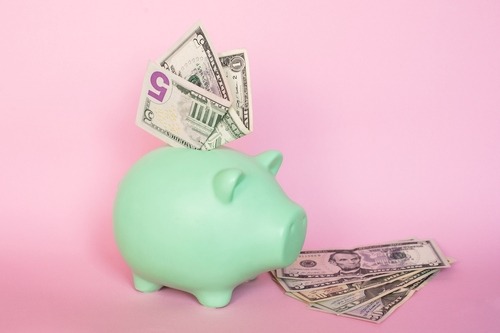About That Housing Rally Amid a Recession
The average price for a median existing single-family home in the United States has risen about 12% compared with a year ago.

When 2020 officially joins the history books, one of the most bizarre financial trends left to reflect upon could be the strong rally in the residential real estate market set against the backdrop of a sharp and sustained economic recession.
After all, economic contractions have historically been characterized by widespread job losses, which in turn leads to foreclosures and evictions. The net result is usually a rising pool of available housing inventory, which ultimately pushes down prices.
That was the exact series of events that played out during the last major economic recession in the United States (2008-2009). It’s estimated that real housing prices dropped by as much as 30% during the Great Recession.
So far, it appears 2020 hasn’t gotten the memo.
As of November, the average price for a median existing single-family home in the United States has risen about 12% as compared to a year ago.
So why have things been so different this time around?
The answer is rooted in the coronavirus pandemic, which has made the “home experience” more important than any time in recent memory. That’s thanks to quarantines, lockdowns, remote working, remote learning and pretty much everything else in 2020 that’s turned life “outside-in,” as opposed to “inside-out.”
For some existing homeowners, that’s translated to a desire for a new home that better fits their needs. For others, it’s translated to home improvements that make life at home more comfortable—financed with disposable income that might otherwise have been reserved for vacations.
For many other Americans, however, the situation is a lot more dire. Americans hit hard by the coronavirus-induced economic recession aren’t thinking about how to improve their current living situation but how to hold onto it.
As part of the Coronavirus Aid, Relief, and Economic Security (CARES) Act, the U.S. government instituted a series of protections for homeowners. These include a foreclosure moratorium, as well as special forbearance rights which allow homeowners to temporarily delay housing payments.
Such assistance has been instrumental in reducing human suffering associated with the pandemic, but there have been unintended (and unavoidable) consequences of these measures.
With so many people staying in their current homes (due to forbearance or otherwise), there’s been far less inventory available on the open market, which is the opposite situation observed in normal recessions and depressions.
Susan Wachter, a professor of real estate at the Wharton School at the University of Pennsylvania, confirmed the government impact on limiting housing inventory when saying, “Forbearance has stopped defaults; otherwise, we would have seen a wave of defaults.”
In May, Zillow estimated that available housing inventory was down 20% this year compared with 2019. By August, the housing inventory deficit hadn’t narrowed much and was still down 19% year-over-year. That means buyers in 2020 have been fighting each other more fiercely for available units—a demand-supply dynamic that almost always results in higher prices.
On top of the above, one can’t forget that economic lockdowns also delayed the construction of new housing inventory. And when lockdowns ended, construction materials were in such high demand that shortages emerged, which further exacerbated the inventory problem.
Of course, many theorize that aggressive intervention by the Federal Reserve in the form of low-interest rates (i.e. cheap mortgage rates) and asset-buying programs have also helped inflate residential real estate prices in 2020. But those same tactics were used during the Great Recession when housing prices experienced a sharp decline.
In 2020, a differentiating factor appears to be tied to the outsized impact of the coronavirus pandemic on middle- and low-income earners, many of whom were already priced out of the housing market. Unlike 2008-2009, when many professionals in finance and other industries lost their jobs, the pandemic has left a bigger mark on lower tax bracket earners in the service and hospitality sectors.
Simply stated, the financial health of Americans who own homes has remained relatively robust, likely thanks to the concurrent rebound in stock market valuations. Not surprisingly, housing-focused stocks have mirrored the relative strength in the sector.
Well-known home builder Lennar Corporation (LEN) is up 36% this year, while competitor Toll Brothers (TOL) is up a more modest 15%. The home improvement giant, Home Depot (HD), is up 22% so far in 2020, while digital real estate companies Zillow (Z) and Redfin (RDFN) have skyrocketed higher along with the broader tech sector—up 133% and 110% respectively in 2020.
Going forward, it will be interesting to monitor how President-elect Joe Biden navigates the pending flood of foreclosures, which could potentially reverse the upward trend in the housing market. After all, foreclosure moratoriums and forbearance programs can’t go on forever because at some point someone has to “pay the piper.”
A crisis brewing in commercial real estate could also serve to further shake up the sector.
To follow everything moving the financial markets, readers are encouraged to tune into TASTYTRADE LIVE weekdays from 7 a.m. to 4 p.m. Central Time.
Sage Anderson is a pseudonym. The contributor has an extensive background in trading equity derivatives and managing volatility-based portfolios as a former prop trading firm employee. The contributor is not an employee of Luckbox, tastytrade or any affiliated companies. Readers can direct questions about any of the topics covered in this blog post, or any other trading-related subject, to support@luckboxmagazine.com.




















